-
The African grey parrot (Psittacus erithacus) is a medium sized parrot endemic to primary secondary rainforest of west and center Africa. Regarded as the most intelligent bird , their overall gentle nature and their inclination and ability to mimic speech have made them popular pets.
- DISTRIBUTION :
- FOOD :
- Breeding :
AFRICAN GREY PARROT
Psittacus erithacus
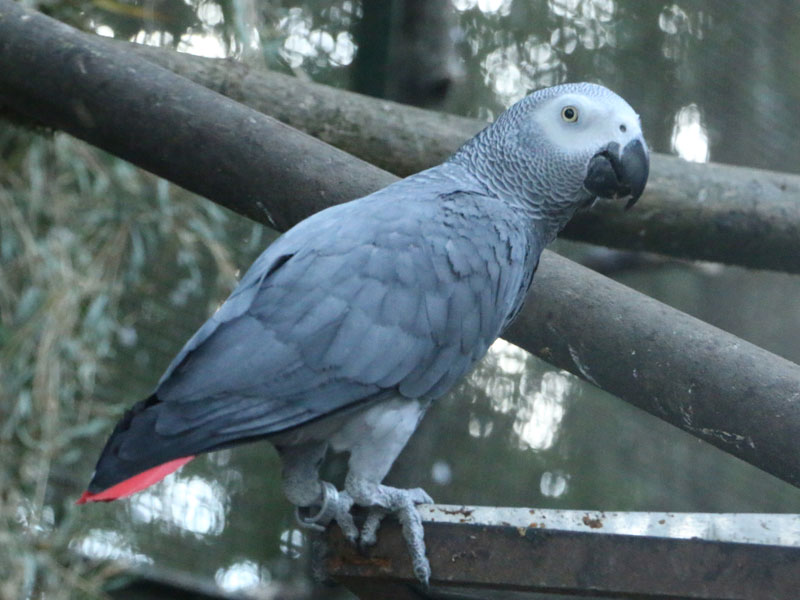
BARE-EYED COCKATOO
Cacatua sanguinea

-
They have horn-colored beaks and bare, gray-blue patches around their eyes. Males and females are identical, though males are slightly larger in stature and also have somewhat larger eye patches.
- DISTRIBUTION : Australia Indonesia Papua New Guinea
- FOOD :
- Breeding :
BLUE GOLD MACAW
Ara ararauna
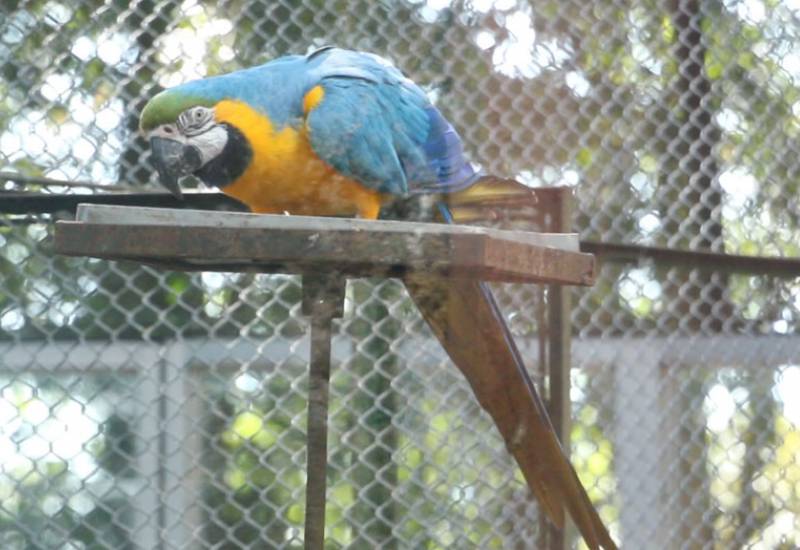
-
Popular as a pet because of their striking appearance and ability as a talking bird the Blue Gold Macaw is a member of the group of large Neotropical parrots known as macaw. Native to Central and South America the Blue Gold macaw is vivid in appearance with blue wings and tail, dark blue chin, golden under-parts and a green forehead.
- DISTRIBUTION :
- FOOD :
- Breeding :
COCKATIEL
Nymphicus hollandicus
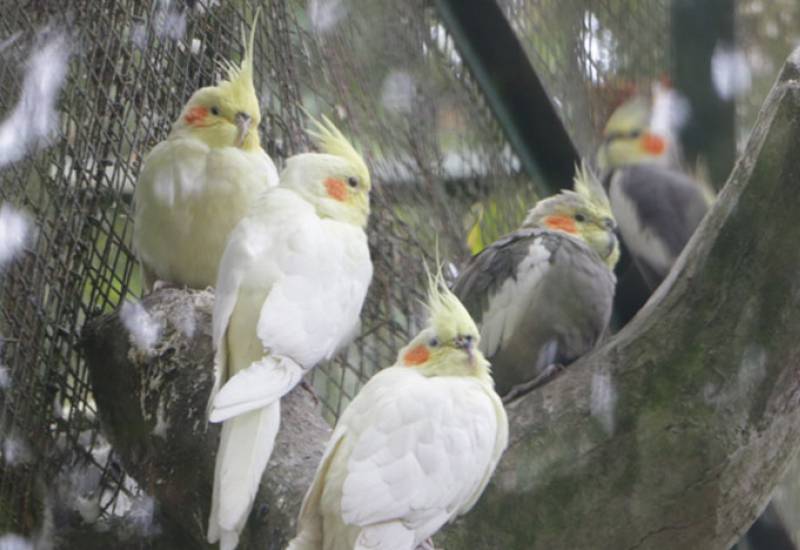
-
The cockatiel, also known as weiro, or quarrion, is a medium-sized parrot that is a member of its own branch of the cockatoo family endemic to Australia. They are prized as household pets and companion parrots throughout the world and are relatively easy to breed.
- DISTRIBUTION :
- FOOD :
- Breeding :
GOLDEN PHEASANT
Chrysolophus pictus
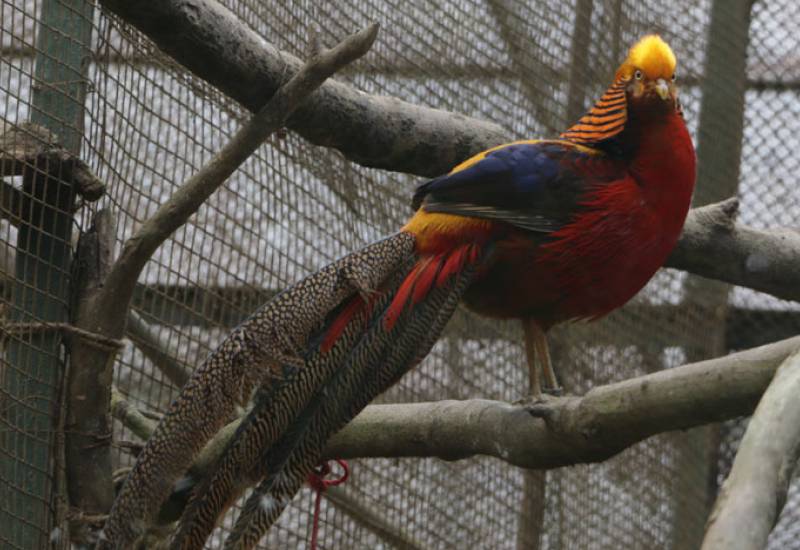
-
The golden pheasant is one of the most popular of all pheasant species kept in captivity kept in captivity. The males are one of the most brilliantly colored of all birds. The adult males should have a full, silky golden-yellow crest with perhaps a slight tinge of red at the tip. The hen, as in most pheasants, has a much duller coloration than the male.
- DISTRIBUTION :
- FOOD :
- Breeding : CLUTCH SIZE 8to 12, Incubation period 22 to 23 days
GREY PEACOK PHEASANT
Polyplectron bicalcaratum
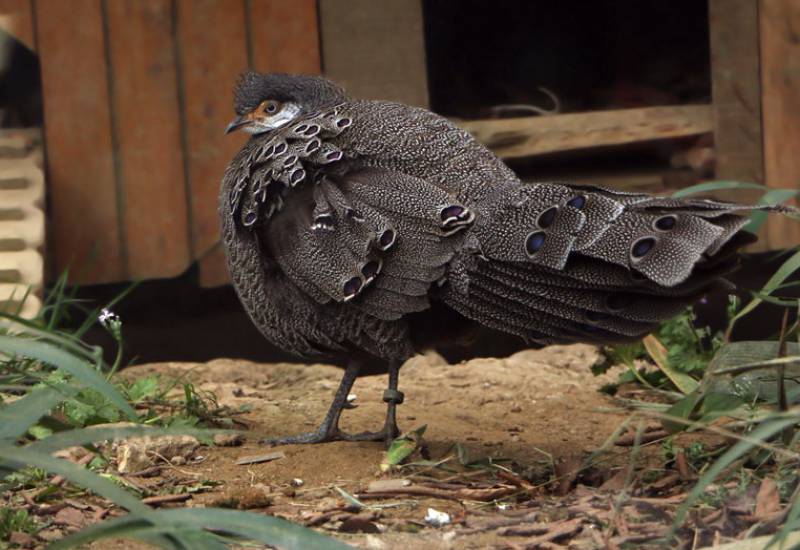
-
The Grey Peacock-Pheasant also known as Burmese Peacock or Chinquis Peacock-pheasant is a large southeast Asian member of the order Galliformes. It is rather closely related to the Peafowl and like most other polyplectron has brilliant eyes on its plumage . It is the national bird of Burma.
- DISTRIBUTION : Resident of fairly common in undisturbed forests. Distributed in the Central and Eastern Himalayas (Sikkim, Arunachal Pradesh) and northeast India (Assam,Meghalaya, Manipur, Mizoram, Nagaland ,Tripura). Ihabits dense undergrowth in tropical moist , broad leaved evergreen semi–evergreen forest.
- FOOD :
- Breeding : March –June , Clutch Size :2, incubation period : 21 days
HIMALAYAN MONAL PHEASANT
Lophophorus impejanus
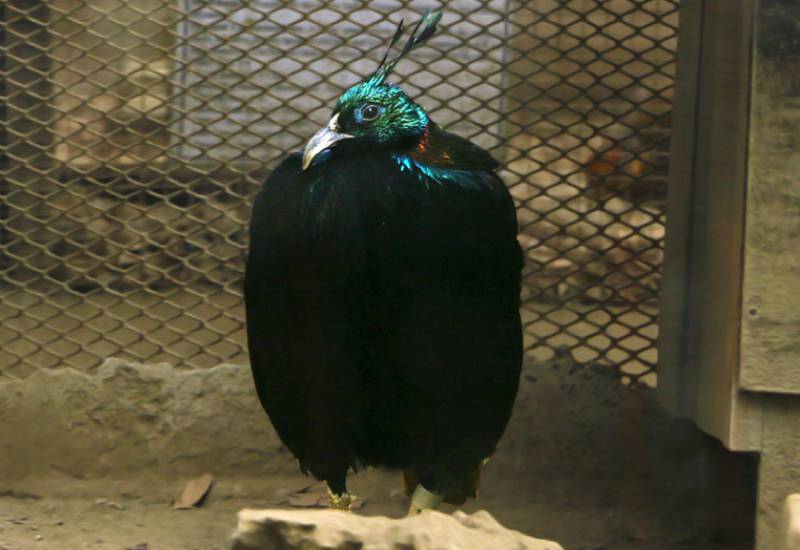
-
The Himalayan Monal,Lophophorus impejanus also known as the Impeyan Monnal or Impeyan Pheasant orDanphe is a bird of genus Lophophorus of the Pheasant family, Phasianidae. It is the National bird of Nepal ,where it is known as the Danfe, and the state bird of Uttarakhand.
- DISTRIBUTION : Resident and firly common. Distributed in the north western, westreb, central and eastern Himalayas jammu &Kashmir,Himachal Pradesh , Uttarakhand, Sikkim Arunachal Pradesh.
- FOOD :
- Breeding : April mid july, Clutch size 4-5 the incubation period is unknown.
KALIJ PHEASANT
Lophura leucomelanos
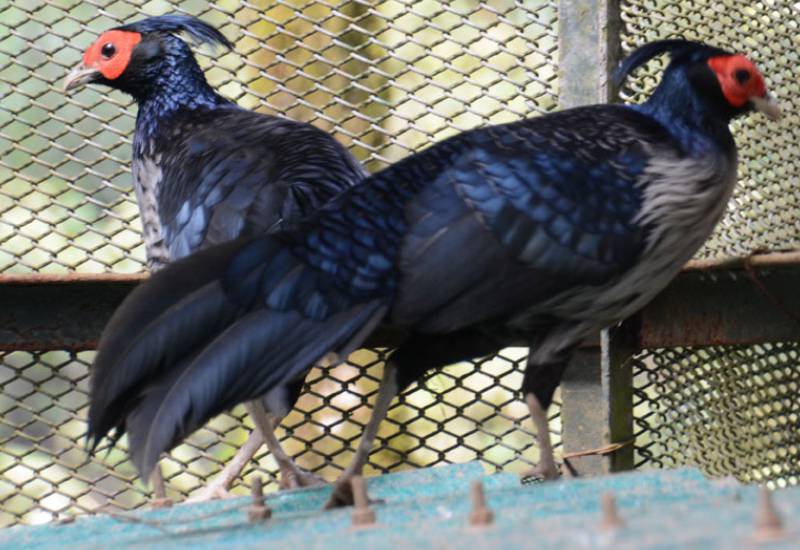
-
Kalij pheasants are found in the Himalayan forests where they can be seen near water and in dense undergrowth. These birds are cousins of our domestic fowls.
- DISTRIBUTION : Resident and locally common. Distributed in the northwestern, western , central and eastern Himalayas (Jammu and Kashmir , Himachal Pradesh, Uttarakhand, Sikkim, Arunachal Pradesh and northern West Bengal )usually <2,700m and in the hills of northeast India (Assam, Meghalaya, Manipur, Meghalaya, Mizoram, Nagaland &Tripura). Inhabits all types of forest with dense undergrowth and thickly overgrown steep gullies , usually not far from water.
- FOOD :
- Breeding :
LADY AMHERST
crysolophus amherstiae
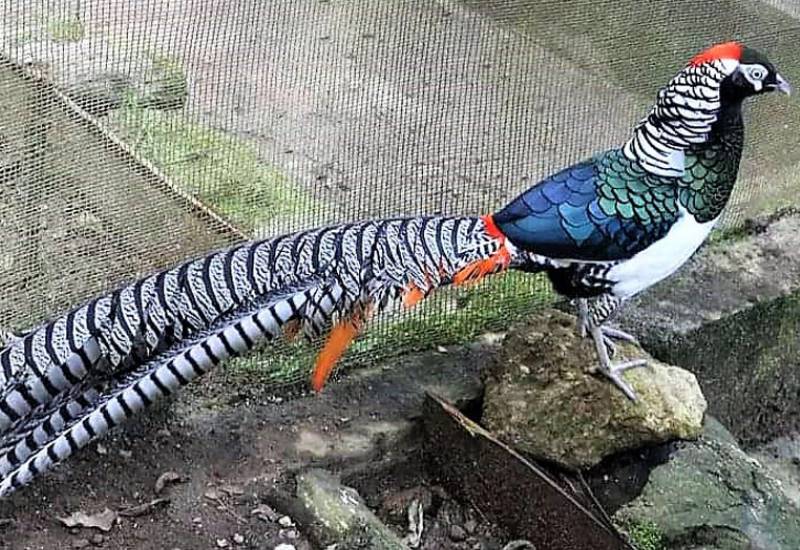
-
Named for sarah , countess of Amherst (1762-1838). Chysolophus from the greek word chryseos meaning golden and lophos , Greek for crest.
- DISTRIBUTION : Southwestern china & northern Burma. Great Britain. Attempted introduction have taken place throughout the world including New Zealand and Hawaii. Birds may also be seen in a semi feral state in the US ,mostly escapes from aviaries or purposely released .Forested areas and bamboo thickets.
- FOOD :
- Breeding : Varied depending on climate but usually begins in may.
RED JUNGLE FOWL
Gallus Gallus
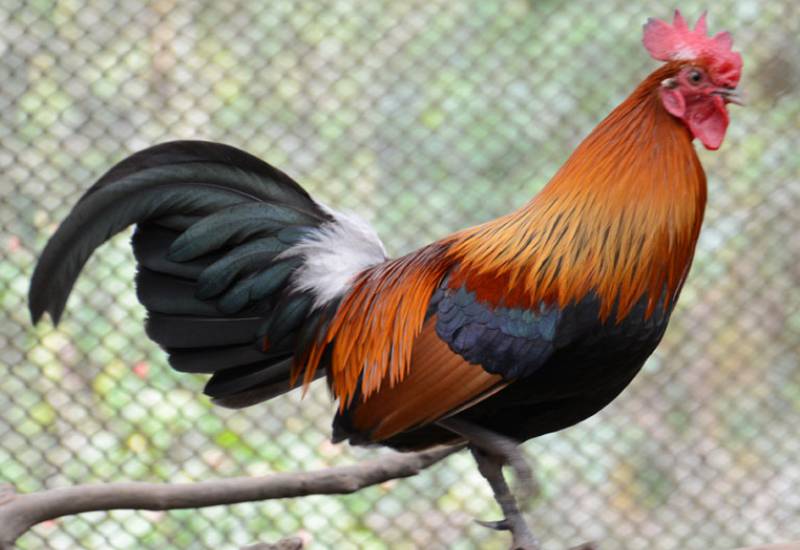
-
The Red jungle Fowl is a tropical member of the Pheasant family , and is often believed to be a direct ancestor of the domestic chicken .
- DISTRIBUTION : Distributed in the lower Himalayas <2,00m from Jammu & Kashmir east to Arunachal Pradesh , Shiwaliks ,Terai , northeast and eastern India . Inhabits undergrowths in moist mixed Cultivation and well-watered areas.
- FOOD :
- Breeding : January –October, Clutch Size : 5 to 6.
REEVESS PHEASANT
Syrmaticus reevesii
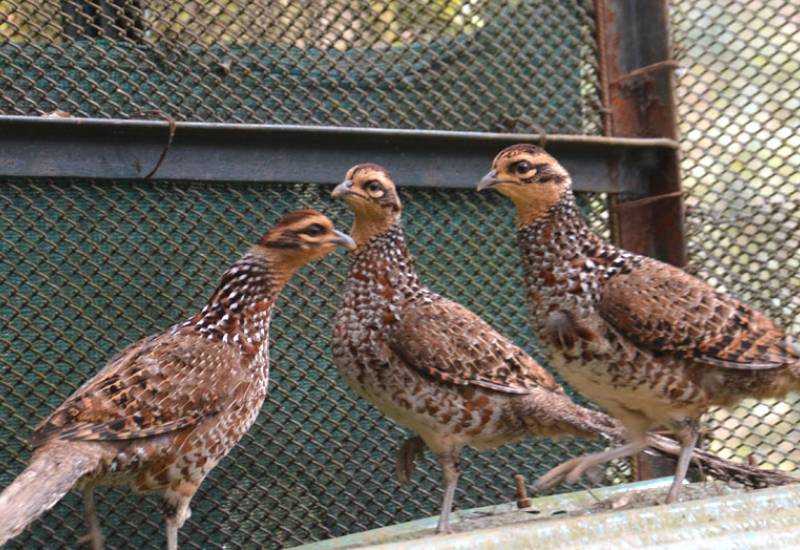
-
Reevess pheasant is a large pheasant within the genus Syrmaticus. It is endemic to China. It is named after the British naturalist John Reeves, who first introduced live specimens to Europe in 1831.
- DISTRIBUTION :
- FOOD :
- Breeding :
ROSE-RINGED PARAKEET
psittacula krameri
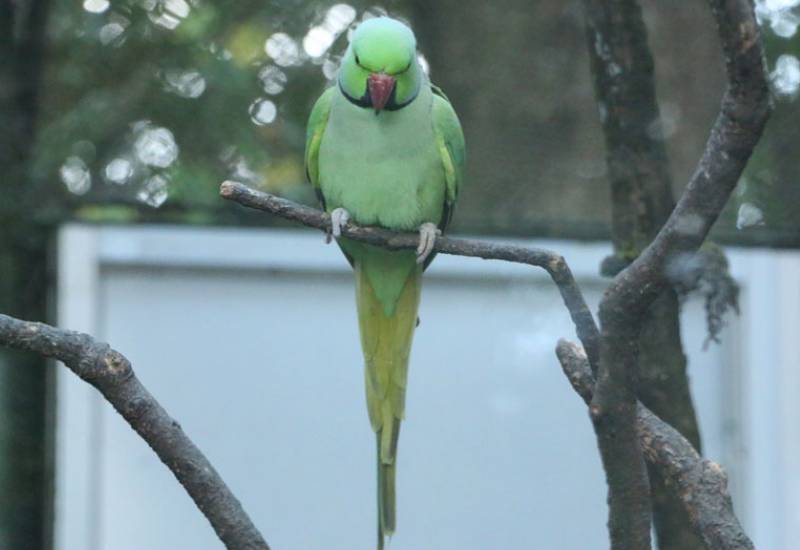
-
The Rose-ringed parakeet also known as the Ringnecked Parakeet, is a gregarious tropical parakeet species that is popular as a pet. This non-migrating species is one of few parrot species that have successfully adapted to living in disturbed habitats and in that way with stood the onslaught of urbanization and deforestation .In the wild this is a noisy species with an unmistakable squawking call.
- DISTRIBUTION : native to Africa, Guinea, Senegal, Southern Mauritania, Western Uganda and Southern Sudan.
- FOOD :
- Breeding : The rose rger parakeet is a monogamous bird , clutch size -3 to 4
SILVER PHEASANT
Lophura nucthemera
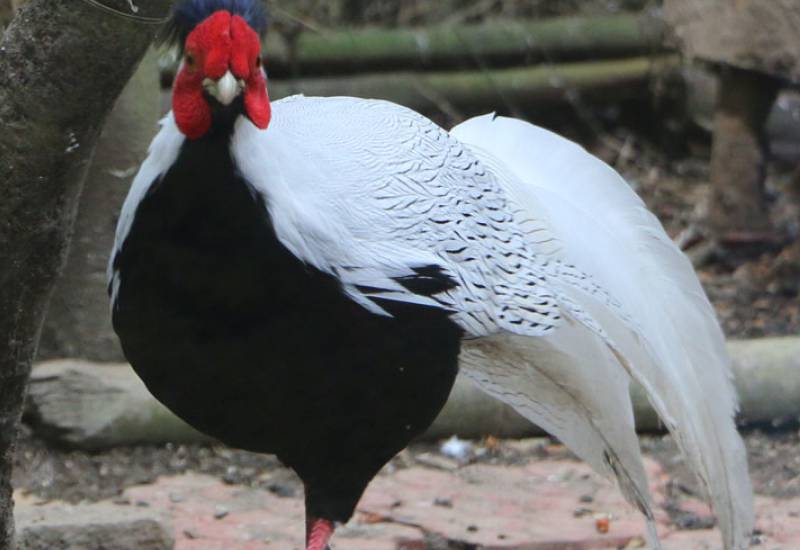
-
The silver pheasant is a species of pheasant found in forests, mainly in mountains, of mainland Southeast Asia and eastern and southern China, with an introduced population on Victoria Island in Nahuel Huapi Lake, Neuquén, Argentina. The male is black and white, while the female is mainly brown.
- DISTRIBUTION : South-western China, eastern Myanmar, southern Vietnam, southwestern Combodia, southeastern Thialand, northern Laos and the island of Hainan.
- FOOD :
- Breeding : Usually starts from second year, but first years birds are often fertile. Silver pheasants are among the first birds to begin laying. Eggs may be found as early as late February to early March, slowing down in May. Clutch size of silver pheasants are usually 6 to 15. The mother incubates her eggs for 26 to 27 days before the chicks hatch. It is recommended to allow the hens to go broody, as they are great mothers and is very interesting to observe the family behavior of this species. The male also participate with the rearing of the chicks. The chicks do grow quickly and are able to fly at only a few days.
SULPHUR-CRESTED COCKATOO
Cacatua galerita
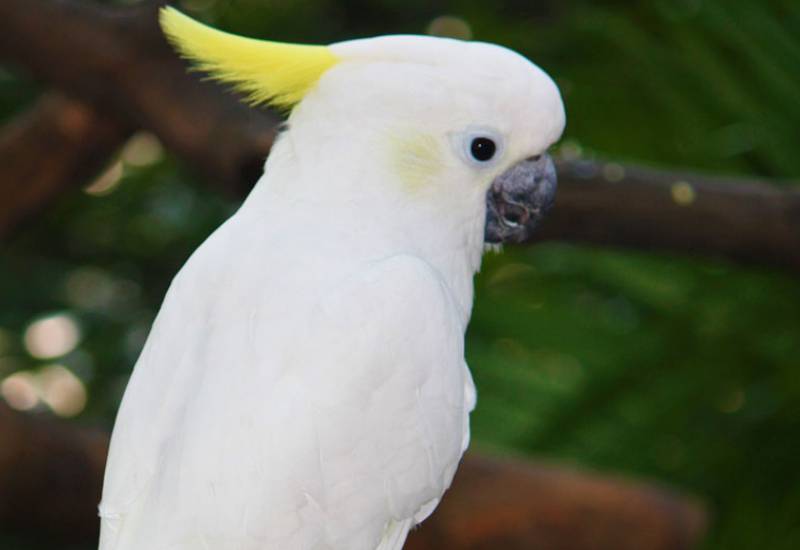
-
The sulphur-crested cockatoo is a relatively large white cockatoo found in wooded habitats in Australia, New Guinea, and some of the islands of Indonesia. They can be locally very numerous, leading to them sometimes being considered pests.
- DISTRIBUTION :
- FOOD :
- Breeding :
TEMMINCKS TRAGOPAN
Tragopan temminckii

-
The Temmincks tragopan is a medium-sized, approximately 64 cm long, pheasant in the genus Tragopan. The male is a stocky red-and-orange bird with white-spotted plumage, black bill and pink legs. The males display features include bare blue facial skin, inflatable dark-blue lappet and horns.
- DISTRIBUTION :
- FOOD :
- Breeding :

